-
 Bitcoin
Bitcoin $112400
0.86% -
 Ethereum
Ethereum $4509
-0.37% -
 XRP
XRP $2.968
-0.52% -
 Tether USDt
Tether USDt $0.9999
-0.02% -
 BNB
BNB $876.4
2.10% -
 Solana
Solana $214.3
4.69% -
 USDC
USDC $0.9998
-0.01% -
 Dogecoin
Dogecoin $0.2241
1.86% -
 TRON
TRON $0.3447
-0.45% -
 Cardano
Cardano $0.8586
0.25% -
 Chainlink
Chainlink $25.26
5.76% -
 Hyperliquid
Hyperliquid $45.95
-3.38% -
 Ethena USDe
Ethena USDe $1.001
-0.01% -
 Sui
Sui $3.491
0.92% -
 Stellar
Stellar $0.3830
0.57% -
 Cronos
Cronos $0.3333
27.15% -
 Bitcoin Cash
Bitcoin Cash $557.0
0.74% -
 Avalanche
Avalanche $24.75
0.77% -
 Hedera
Hedera $0.2406
0.46% -
 UNUS SED LEO
UNUS SED LEO $9.561
-0.08% -
 Litecoin
Litecoin $113.8
0.74% -
 Toncoin
Toncoin $3.187
1.26% -
 Shiba Inu
Shiba Inu $0.00001264
0.86% -
 Polkadot
Polkadot $3.995
3.37% -
 Uniswap
Uniswap $10.04
1.61% -
 Dai
Dai $0.9999
-0.01% -
 Bitget Token
Bitget Token $4.603
-0.87% -
 Monero
Monero $269.4
-1.07% -
 Aave
Aave $317.5
-1.55% -
 Ethena
Ethena $0.6731
10.25%
How to unstake crypto on Trust Wallet?
Unstaking in Trust Wallet involves withdrawing staked crypto, with possible cooldown periods and gas fees depending on the blockchain.
Jul 04, 2025 at 05:56 am
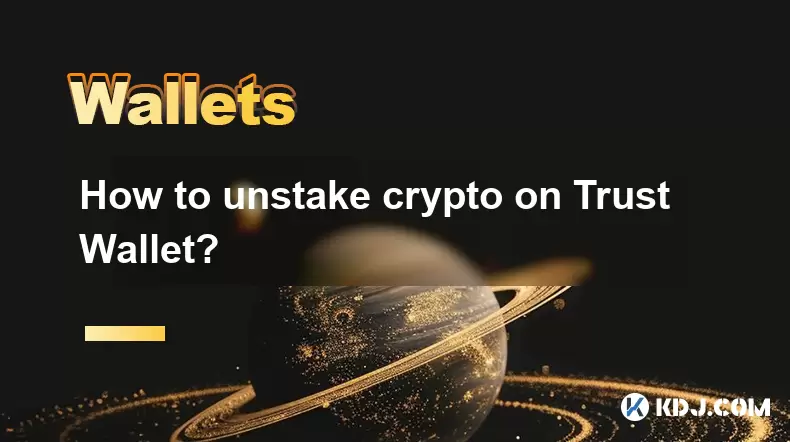
Understanding the Basics of Staking and Unstaking in Trust Wallet
Before diving into the steps to unstake crypto on Trust Wallet, it's essential to understand what staking entails. Staking involves locking up a certain amount of cryptocurrency to support the operations of a blockchain network, particularly those using Proof-of-Stake (PoS) consensus mechanisms. In return, users earn rewards, often in the form of additional tokens.
Unstaking, on the other hand, is the process of withdrawing your previously staked tokens from the network or platform. This may be necessary if you want to access your funds for trading, transferring, or moving them to another wallet or exchange. It’s important to note that some networks impose a waiting period before staked assets become liquid again.
Trust Wallet supports several PoS-based cryptocurrencies such as BNB (Binance Coin), Cosmos (ATOM), and Ethereum 2.0 (ETH) among others. Each of these has its own set of rules and timelines for unstaking, which must be considered before proceeding.
Navigating to the Staking Section in Trust Wallet
To begin the unstaking process, open the Trust Wallet application on your mobile device. Ensure that you are logged into your wallet and have selected the correct account if you manage multiple wallets within the app.
- Go to the 'Wallet' tab at the bottom of the screen
- Scroll down until you find the 'Staking' section
- Tap on the cryptocurrency you’ve previously staked
Once inside the staking interface, you’ll see details like the amount staked, annual percentage yield (APY), and any pending rewards. These metrics help you assess whether it's financially beneficial to proceed with unstaking immediately or wait for more reward accumulation.
Initiating the Unstaking Process
After selecting the staked asset, you'll typically see options to either 'Manage' or 'Unstake' depending on how the interface is structured for that particular token. Some assets may require you to first claim any accrued rewards before initiating an unstake.
- Tap on the 'Unstake' button
- Enter the amount you wish to unstake — this can be the full amount or a partial withdrawal
- Confirm the transaction by tapping 'Confirm' or 'Continue'
At this point, you may be prompted to sign the transaction using your wallet’s security method — usually a biometric scan or passcode. The network will then process the request, which may take anywhere from a few seconds to several days, depending on the protocol.
It’s crucial to remember that some blockchains implement a cooldown period before the funds become available for transfer. During this time, you won’t be able to move or trade the unstaked tokens.
Reviewing Transaction Details and Fees
Before finalizing the unstaking action, always review the transaction details carefully. Look for:
- The exact amount being unstaked
- The estimated time for the funds to become liquid
- Any associated fees or gas costs
Gas fees are paid in the native currency of the blockchain you're interacting with — for example, BNB for Binance Smart Chain or ETH for Ethereum. If your wallet doesn't have enough of the native token, the transaction may fail or get stuck.
If you're unsure about the fee structure, consider checking the network explorer or visiting the official documentation for the specific blockchain you’re unstaking from. Misjudging gas prices can lead to unnecessary delays or losses.
Monitoring the Unstaking Status
Once the unstaking request is submitted, you can monitor its status directly in the Trust Wallet app. Navigate back to the 'Staking' section and look for updates under the relevant cryptocurrency.
You may also use a blockchain explorer associated with the network (e.g., BscScan for Binance Smart Chain or Etherscan for Ethereum) to track the progress of your unstaking transaction. Simply copy the transaction hash from Trust Wallet and paste it into the search bar of the explorer.
During the cooldown or unbonding period, the tokens remain in a transitional state — they are no longer generating rewards but aren’t fully tradable yet. Once this period ends, the tokens will appear as available balance in your wallet and can be freely transferred or sold.
Frequently Asked Questions
Q: Can I unstake only a portion of my staked tokens?Yes, Trust Wallet allows partial unstaking for most supported cryptocurrencies. When initiating the unstake, simply enter the desired amount instead of choosing the full staked balance.
Q: Why does it take time for unstaked tokens to become available?Many PoS blockchains enforce a cooldown or unbonding period to ensure network stability and prevent rapid validator changes. This period varies by blockchain and is not controlled by Trust Wallet.
Q: What happens to my staking rewards when I unstake?Your accumulated rewards are typically not affected by unstaking unless the protocol specifies otherwise. However, you may need to manually claim rewards before or after the unstake process, depending on the token.
Q: Do I need to pay a fee to unstake on Trust Wallet?Unstaking itself doesn't incur a direct fee from Trust Wallet, but you must pay network gas fees in the native token of the blockchain you're interacting with.
Disclaimer:info@kdj.com
The information provided is not trading advice. kdj.com does not assume any responsibility for any investments made based on the information provided in this article. Cryptocurrencies are highly volatile and it is highly recommended that you invest with caution after thorough research!
If you believe that the content used on this website infringes your copyright, please contact us immediately (info@kdj.com) and we will delete it promptly.
- Blockchain, GDP Data, Transparent Future: A New Era of Economic Reporting?
- 2025-08-29 11:05:12
- BlockDAG's 15,000 TPS and Execution-Driven Model: A Crypto Game Changer?
- 2025-08-29 11:25:15
- SHIB Price, Trading Volume, Cryptocurrency: Riding the Whale Waves
- 2025-08-29 09:25:17
- Tapzi: GameFi's Rising Star Offering Altcoin Returns
- 2025-08-29 08:45:16
- XRP Price, Large Transactions, Record Volume: What's the Buzz?
- 2025-08-29 07:05:12
- Trump Price Rebounds: Canary Capital's Spot TRUMP ETF Sparks Frenzy
- 2025-08-29 07:05:12
Related knowledge

How to use Trust Wallet's built-in DEX?
Aug 29,2025 at 07:28am
Understanding Trust Wallet’s Built-in DEX1. Trust Wallet integrates a decentralized exchange (DEX) directly within its mobile application, allowing us...
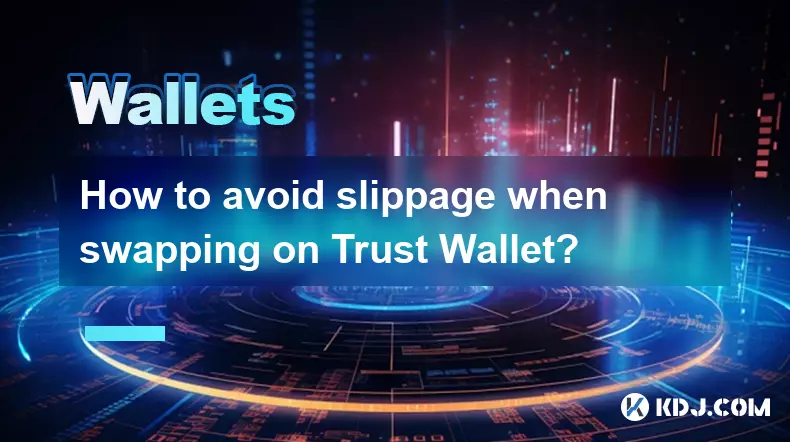
How to avoid slippage when swapping on Trust Wallet?
Aug 29,2025 at 03:01am
Understanding Slippage in Decentralized Exchanges1. Slippage occurs when the price of a cryptocurrency changes between the time a transaction is initi...
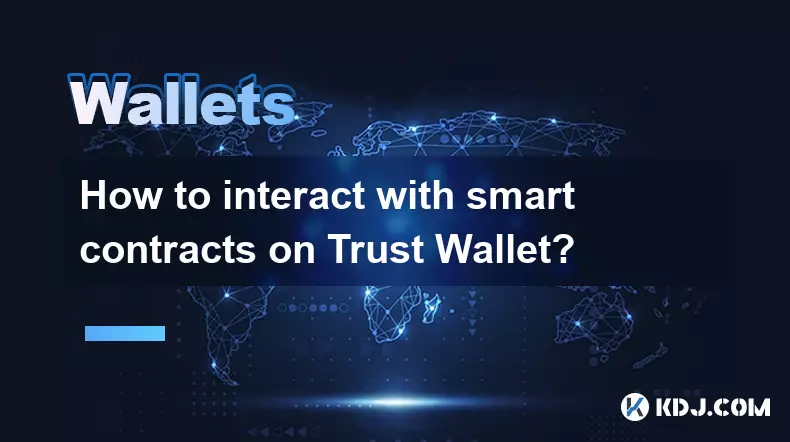
How to interact with smart contracts on Trust Wallet?
Aug 29,2025 at 01:28am
Understanding Smart Contracts and Trust Wallet Compatibility1. Smart contracts are self-executing agreements with the terms directly written into code...

How to change the currency displayed in Trust Wallet?
Aug 29,2025 at 02:42am
Understanding Currency Display in Trust Wallet1. Trust Wallet allows users to manage multiple cryptocurrencies and tokens within a single interface. T...
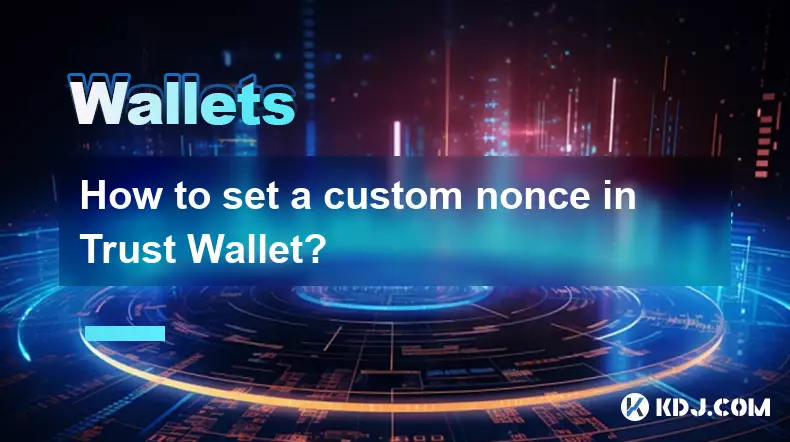
How to set a custom nonce in Trust Wallet?
Aug 29,2025 at 03:29am
Understanding Nonce in Ethereum Transactions1. The nonce is a critical component in Ethereum-based transactions, representing a sequential counter tha...
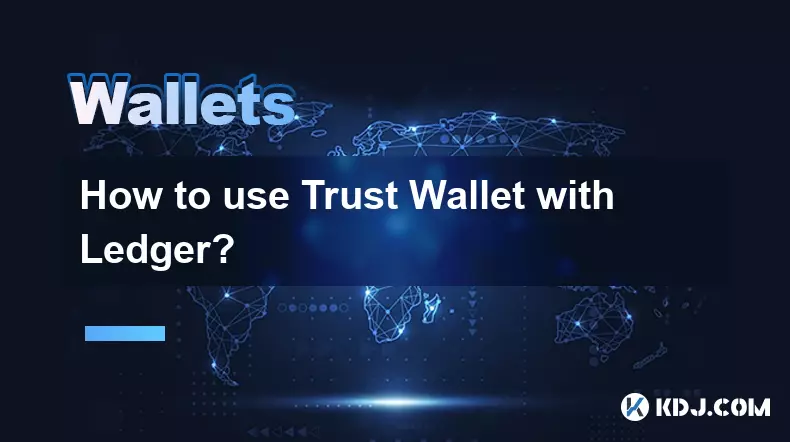
How to use Trust Wallet with Ledger?
Aug 29,2025 at 06:42am
Connecting Trust Wallet with Ledger: A Secure Approach1. Trust Wallet and Ledger integration allows users to manage their cryptocurrency assets with e...

How to use Trust Wallet's built-in DEX?
Aug 29,2025 at 07:28am
Understanding Trust Wallet’s Built-in DEX1. Trust Wallet integrates a decentralized exchange (DEX) directly within its mobile application, allowing us...

How to avoid slippage when swapping on Trust Wallet?
Aug 29,2025 at 03:01am
Understanding Slippage in Decentralized Exchanges1. Slippage occurs when the price of a cryptocurrency changes between the time a transaction is initi...

How to interact with smart contracts on Trust Wallet?
Aug 29,2025 at 01:28am
Understanding Smart Contracts and Trust Wallet Compatibility1. Smart contracts are self-executing agreements with the terms directly written into code...

How to change the currency displayed in Trust Wallet?
Aug 29,2025 at 02:42am
Understanding Currency Display in Trust Wallet1. Trust Wallet allows users to manage multiple cryptocurrencies and tokens within a single interface. T...

How to set a custom nonce in Trust Wallet?
Aug 29,2025 at 03:29am
Understanding Nonce in Ethereum Transactions1. The nonce is a critical component in Ethereum-based transactions, representing a sequential counter tha...

How to use Trust Wallet with Ledger?
Aug 29,2025 at 06:42am
Connecting Trust Wallet with Ledger: A Secure Approach1. Trust Wallet and Ledger integration allows users to manage their cryptocurrency assets with e...
See all articles























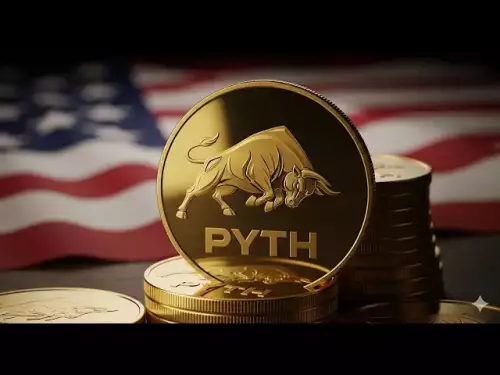
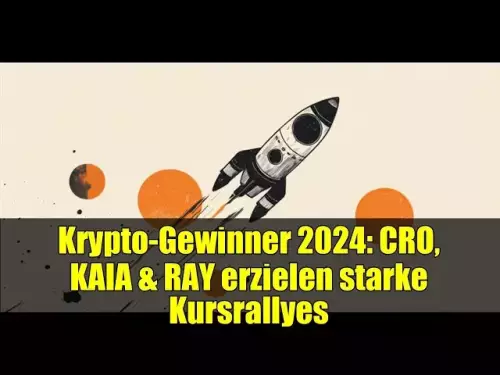
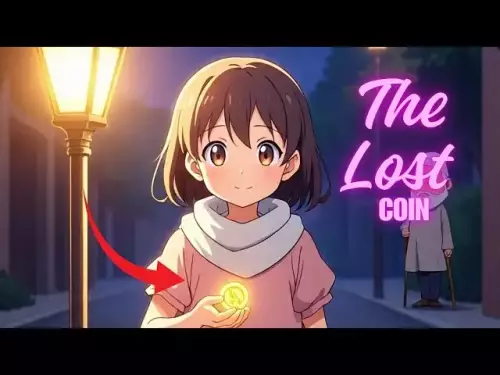
![28 August 2025 - [Evening]Mr Mint (MNT) Zoom Call | Latest Update & Future Plans | Stepmint | 28 August 2025 - [Evening]Mr Mint (MNT) Zoom Call | Latest Update & Future Plans | Stepmint |](/uploads/2025/08/29/cryptocurrencies-news/videos/august-evening-mint-mnt-zoom-call-update-future-plans-stepmint/68b08b4c56a56_image_500_375.webp)






























































